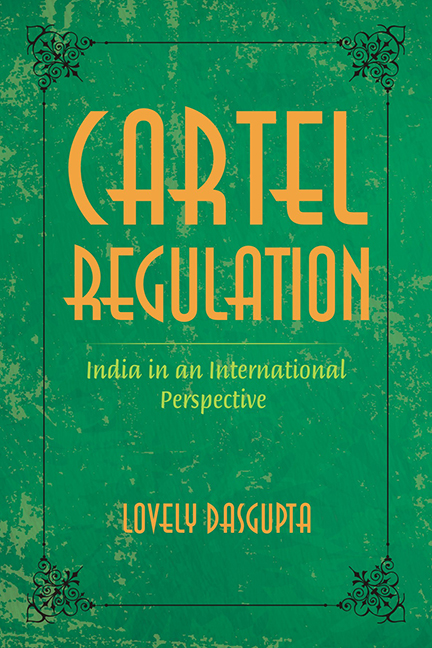Book contents
- Frontmatter
- Contents
- Preface
- Abbreviations
- 1 Introduction
- 2 Cartels: Understanding the Sum and Substance of the Concept
- 3 Cartels and Consumer Interests in the US
- 4 EU, Cartels and Consumer Interests
- 5 India, Cartels and Consumer Interests: The MRTP Phase
- 6 Cartels, Consumer Interests and India Post-MRTP Phase
- Conclusion
- Appendix 1
- Appendix 2
- Bibliography
- Index
4 - EU, Cartels and Consumer Interests
Published online by Cambridge University Press: 29 November 2022
- Frontmatter
- Contents
- Preface
- Abbreviations
- 1 Introduction
- 2 Cartels: Understanding the Sum and Substance of the Concept
- 3 Cartels and Consumer Interests in the US
- 4 EU, Cartels and Consumer Interests
- 5 India, Cartels and Consumer Interests: The MRTP Phase
- 6 Cartels, Consumer Interests and India Post-MRTP Phase
- Conclusion
- Appendix 1
- Appendix 2
- Bibliography
- Index
Summary
Context
With the signing of the Treaty of Rome, the competition law became an important chapter of the Treaty. This was a significant step since major European economies like Germany were largely cartelized. The Treaty of Rome was subsequently amended by the Treaty of Maastricht in 1993 and then by the Treaty of Amsterdam in 1997. The Amsterdam Treaty re-numbered the Treaty of Rome, which effectively meant that the provisions relating to competition were also re-numbered. Thus, Articles 81–89 embodied the entire European competition law (hereinafter called the EU competition law). The Treaty of Rome has been further amended and re-numbered by the Treaty of Lisbon, signed on December 13, 2007 in Lisbon.
Accordingly, the EU competition law, in its entirety, is embodied in Chapter I of Title VII of the Treaty of Lisbon. Furthermore, the Articles 81–89 have been re-numbered as Articles 101–109. As in this book we are concerned with cartels, our focus will be on the relevant provisions relating to cartels. The interpretation of the relevant provisions by EU institutions will be analysed in this chapter. This analysis will help us understand the theoretical response of the EU to cartels. The questions that are sought to be addressed in the process are: which approach, viz., the per se or the rule of reason, best accommodates the consumer interest (both intermediary and end consumer), and how is the objective of an agreement assessed for the purpose of categorizing it as a cartel conduct? As the role of EU institutions in both framing and implementing the anti-cartel law is of paramount importance, the chapter will begin with a review of the structural schema of these institutions. It is herein important to note that the Treaty of Lisbon has not brought about any structural changes within the EU institutions.
EU institutions: An overview
The EU comprises the European Parliament, the European Council, the Council of the European Union, the Commission, the Court of Justice of the EU, the European Central Bank and the Court of Auditors. However, it is the European Parliament, the Council of the European Union and the European Commission which produces the policies and the law that are applicable across the EU.
- Type
- Chapter
- Information
- Cartel RegulationIndia in an International Perspective, pp. 84 - 123Publisher: Foundation BooksPrint publication year: 2014

